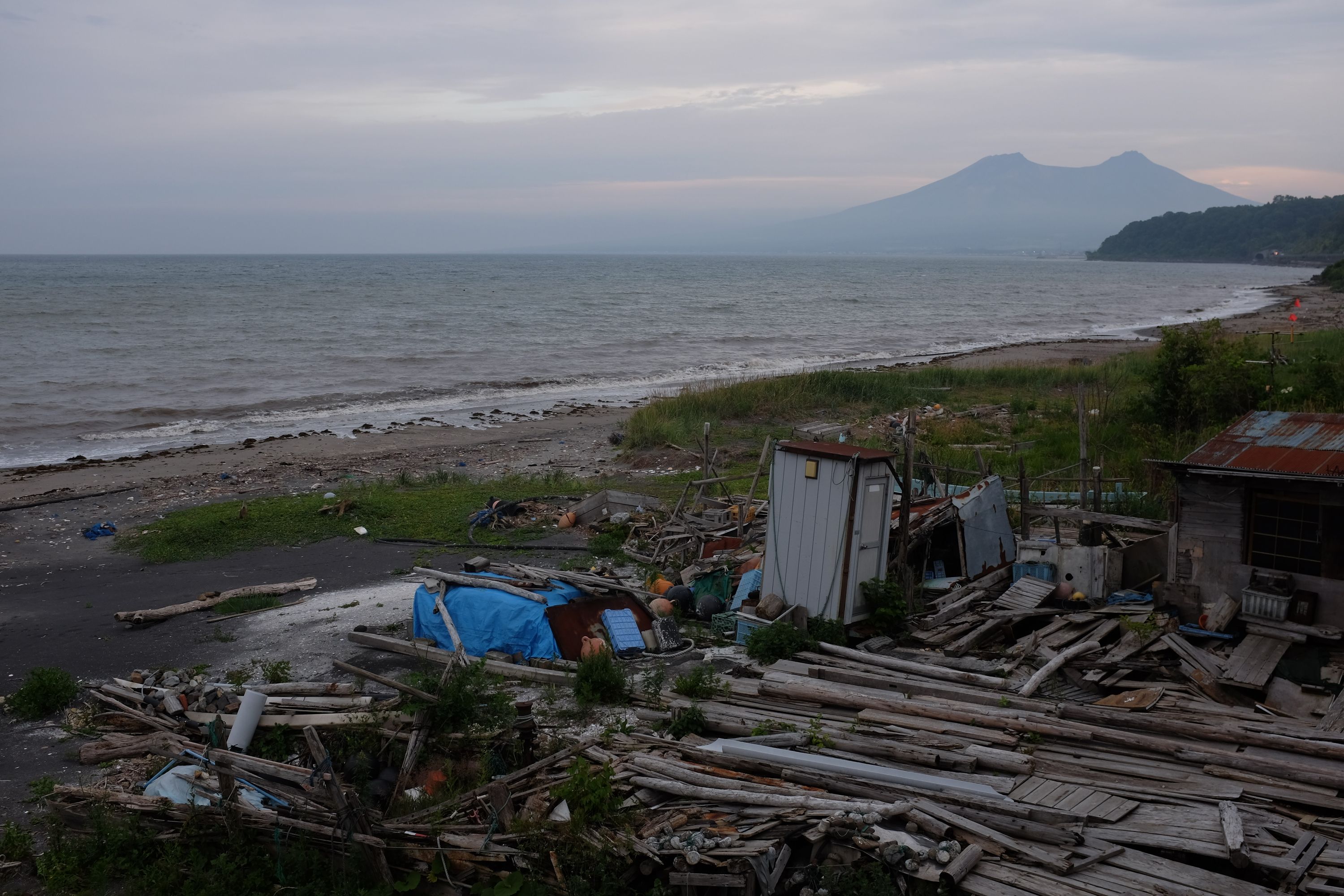Day 106 (July 27, 2017)
Lake Ōnuma, Hokkaido → Otoshibe, Hokkaido
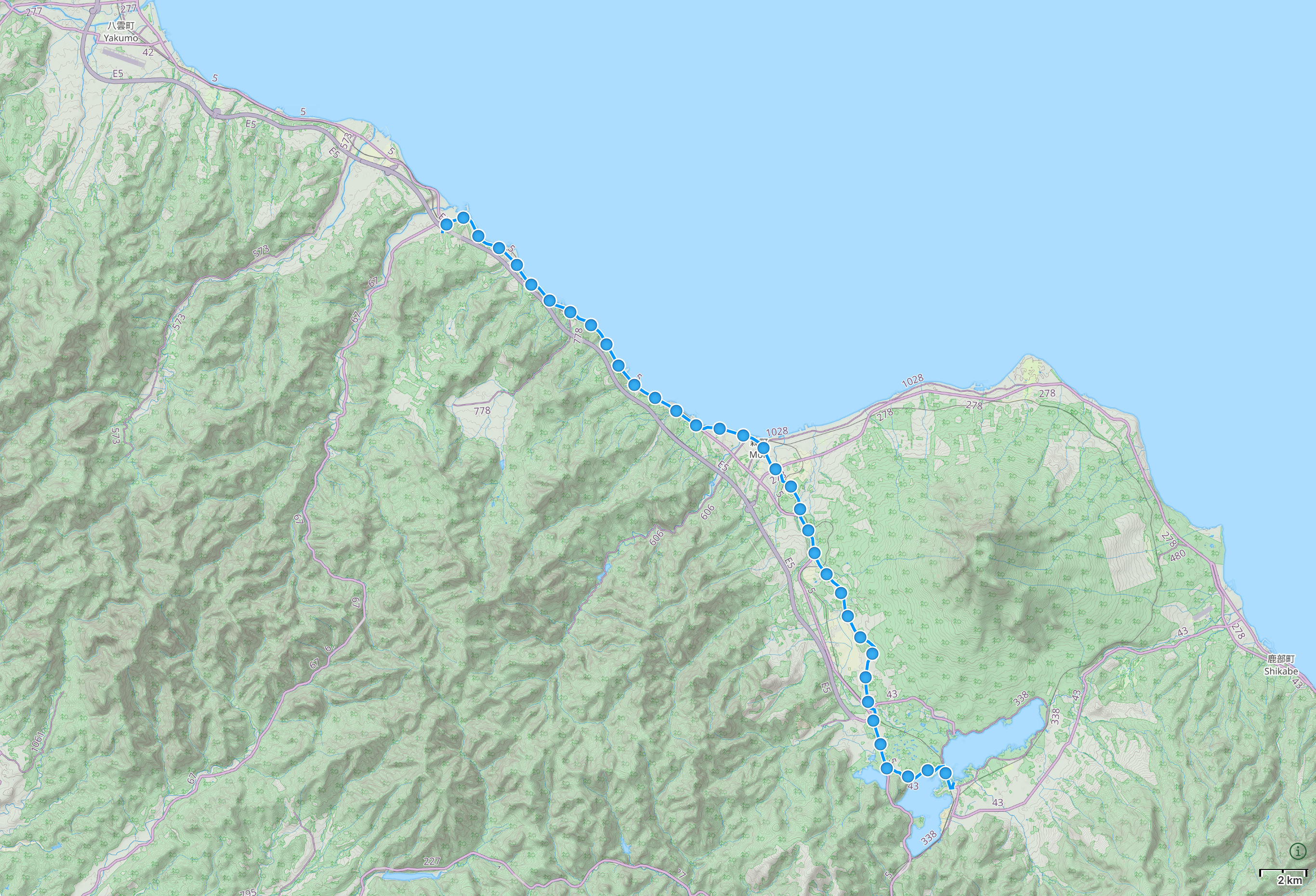
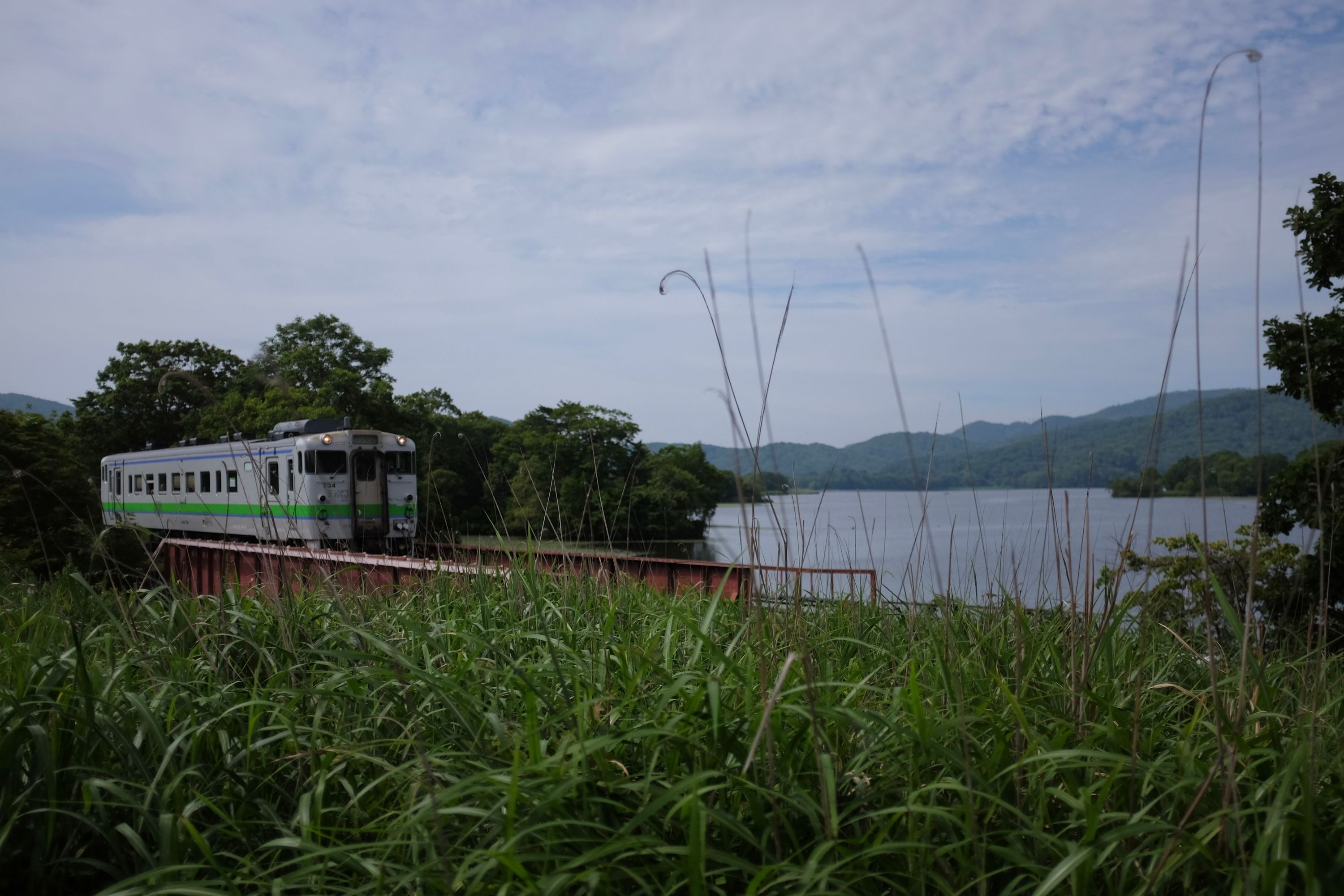
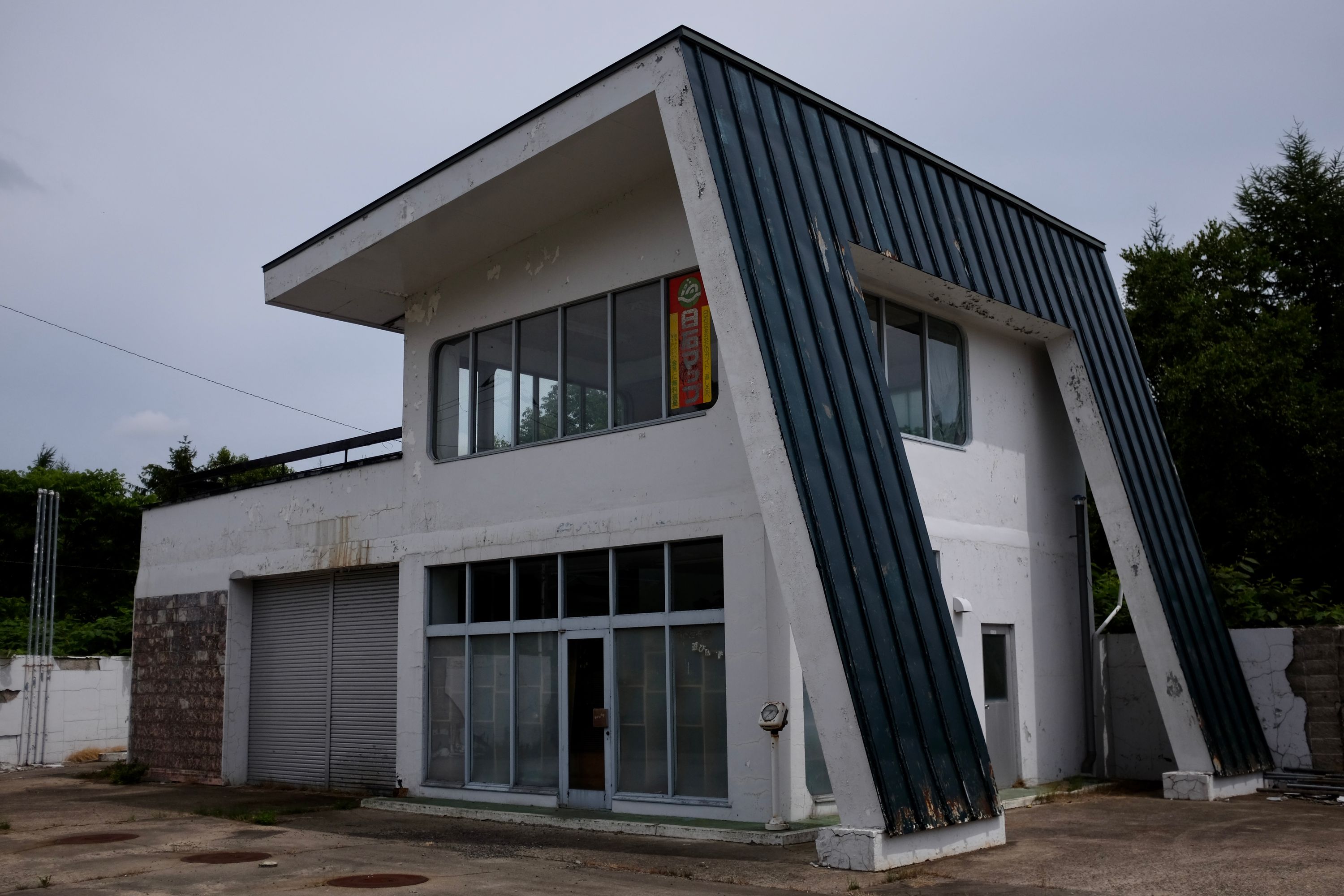
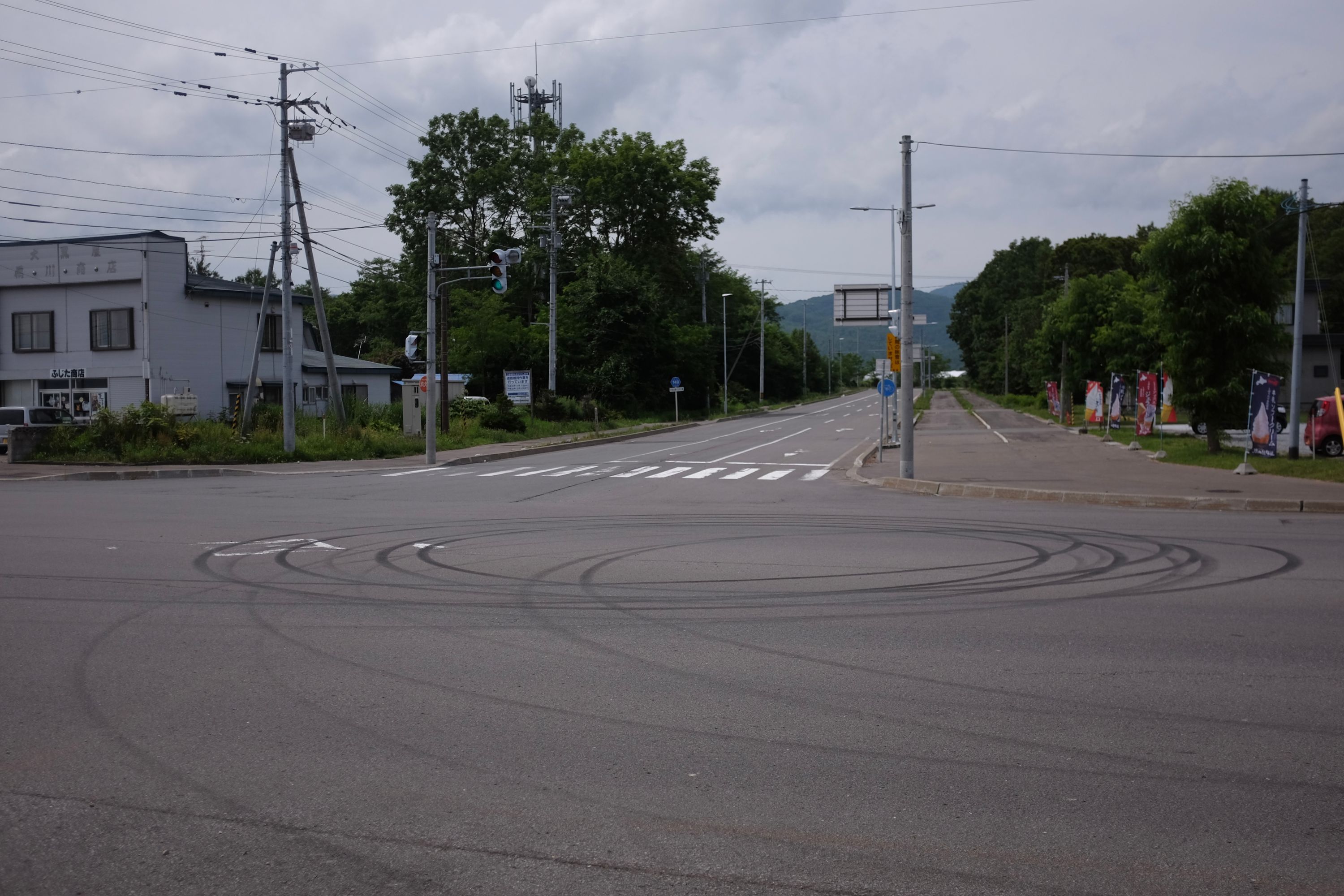
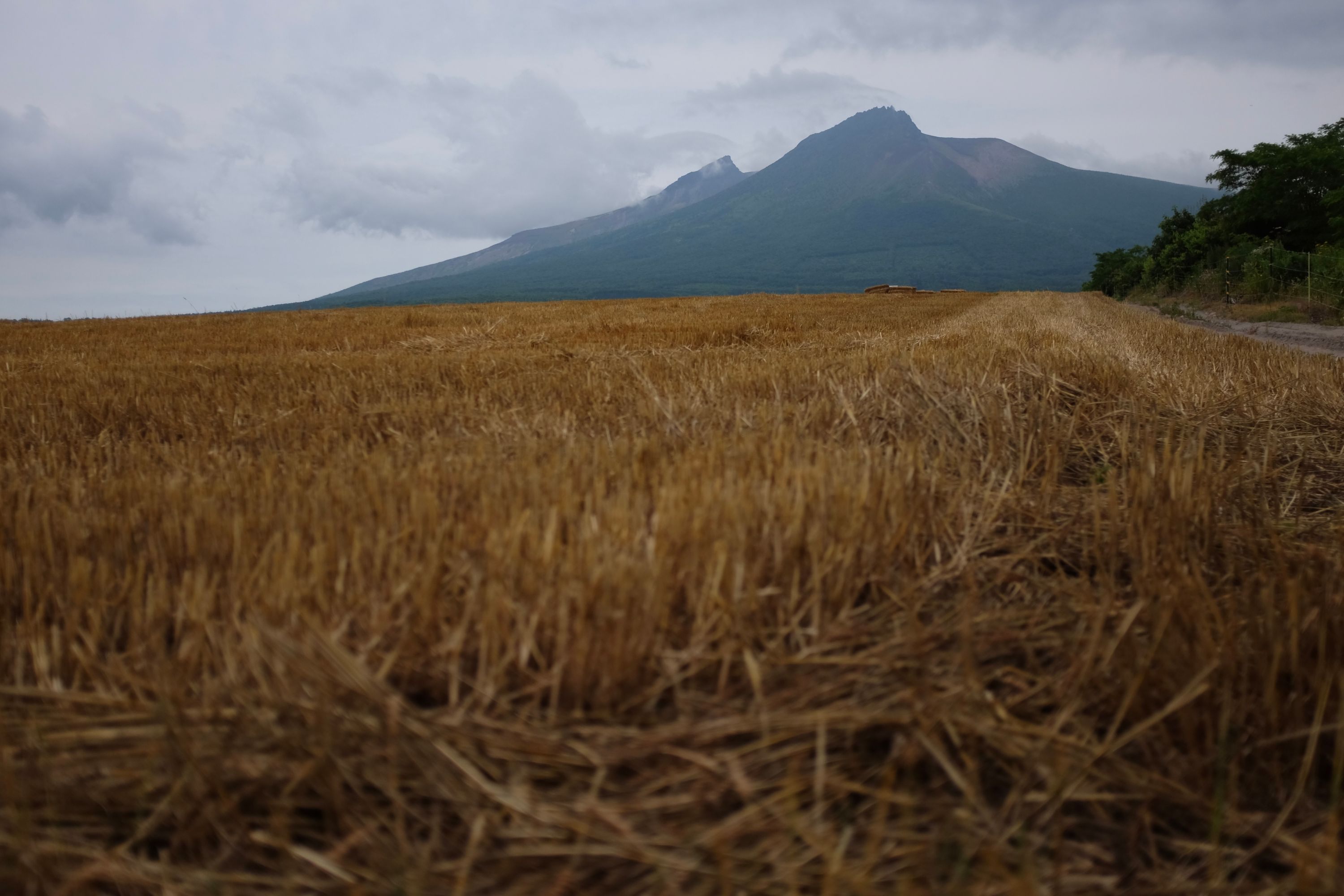
The city thinned out and turned into fields, and beyond a civil engineer’s dream of a valley, all tangled roads and tunnels and rail lines, the painterly, protean silhouette of Mount Komagatake rose above the lakes, then the bay. The land was a European land, wheat fields glowing golden in the morning sun, but the mountain was a Japanese volcano, gentle slopes below a moonscape summit, and on the northern side of the peninsula, it floated above ramshackle villages clinging to a narrow highway rumbling with trucks.
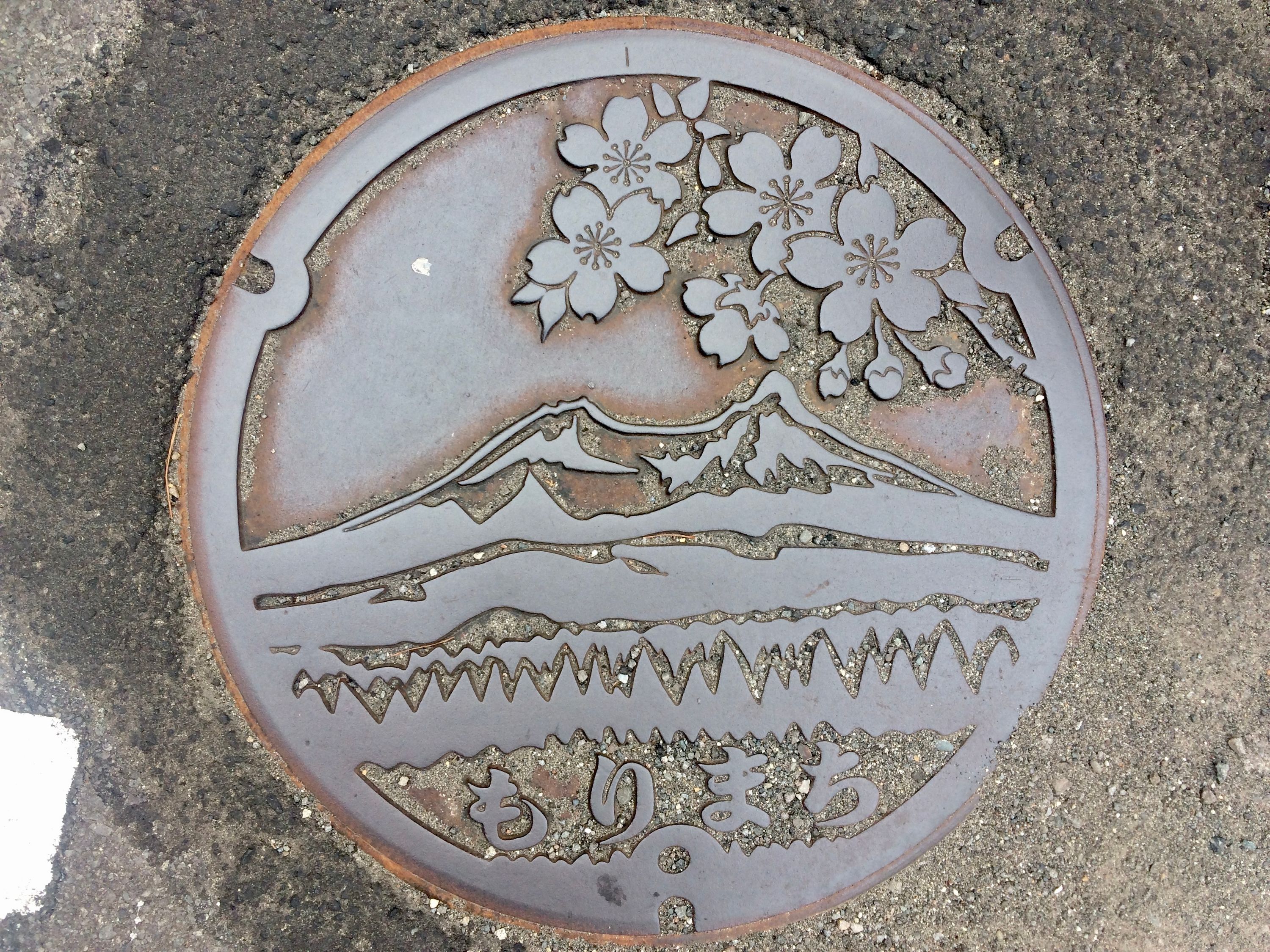
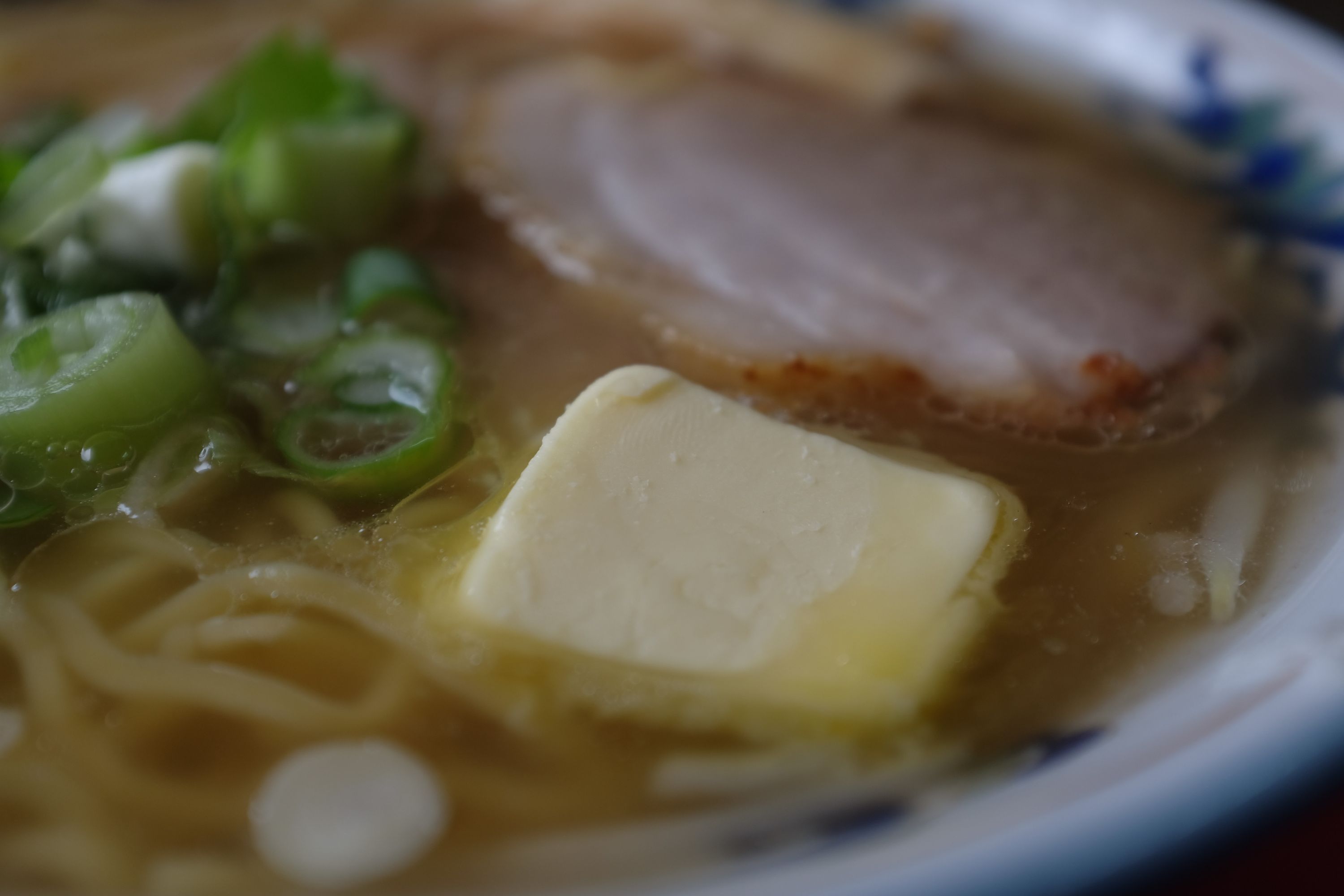
No grocery store in Japan would be complete without sticks of butter from Hokkaido, prominently displaying the manta ray silhouette of the island, and so it didn’t come as much of a surprise that the first ramen restaurant we visited on Hokkaido featured butter ramen on its menu. More peculiar was the culinary confusion served as the end result: a lump of butter chucked into the hot miso broth. It’s the kind of food only men who spend their days walking could love, and we slurped it up with non-ironic delight.
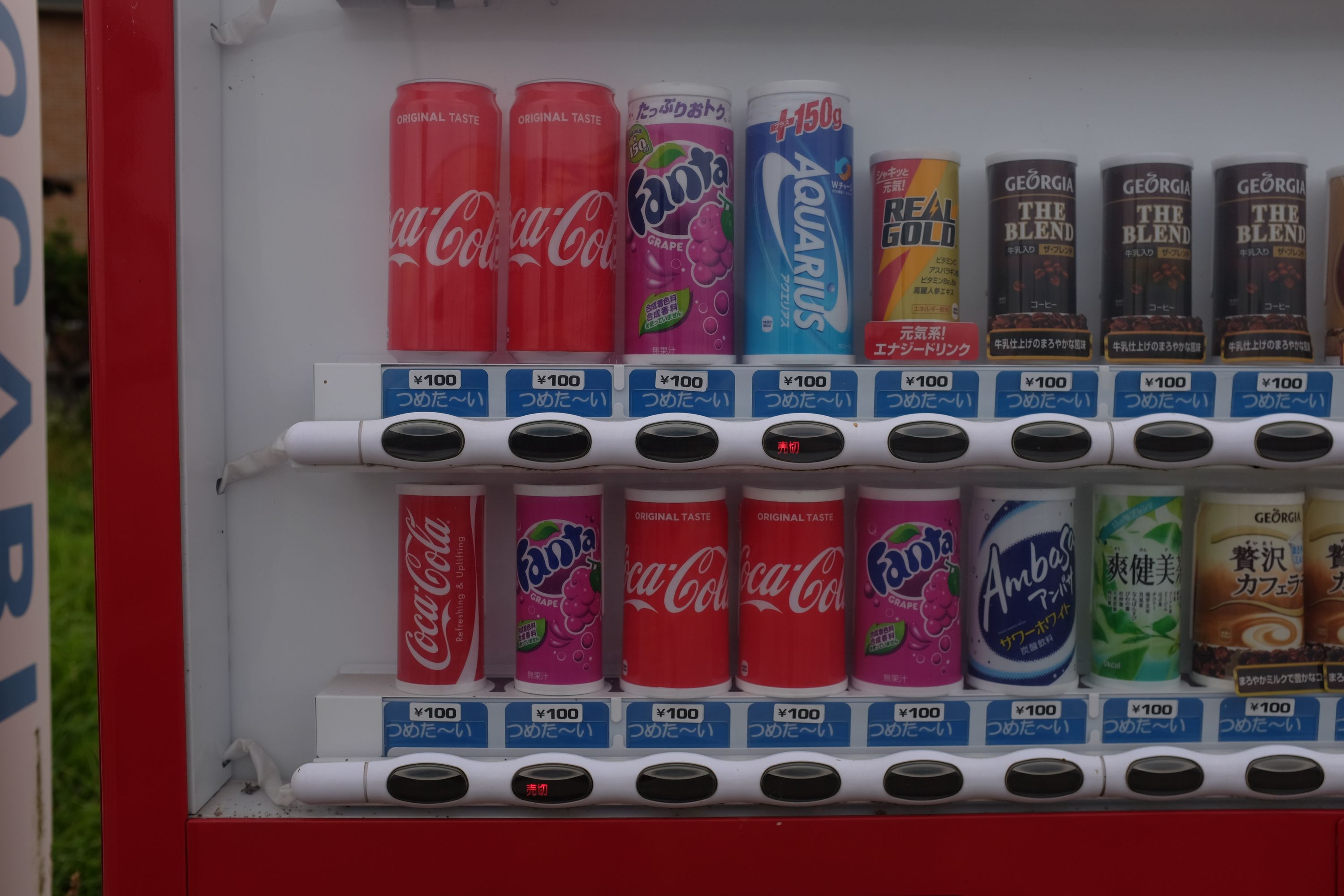
I wonder if any other product in the world is priced like the Coke sold from this vending machine: pay ¥100, and you get as much, or as little, as you want.
